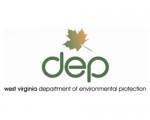|
||
|
FOR IMMEDIATE RELEASE Monday July 21, 2020 Is the EPA turning a blind eye to WVDEP? Watershed protection organizations from three states plead with the EPA to make West Virginia follow the Clean Water Act Ranson, WV, July 21, 2020 – A coalition of advocates has asked the Environmental Protection Agency (EPA) to investigate the actions of the West Virginia Department of Environmental Protection (WVDEP), a state agency charged with protecting the environment but which appears to have allowed hundreds of polluters to operate in violation of the Clean Water Act, putting the surface and ground waters of the Chesapeake Bay and Ohio River Valley watersheds at risk. Documents recently obtained by Jefferson County Foundation show that the DEP advised the companies how it was going to assist them in avoiding operating without a permit, but never told the public. Download the letter and exhibits. What Happened? On January 10, 2019, the WVDEP submitted its draft of an updated Construction Stormwater General Permit (General Permit) to the EPA. On February 8, 2019, the day before it was to take effect, several industry groups appealed the new General Permit, and a stay was issued by the West Virginia Environmental Quality Board (EQB), the quasi-judicial review agency overseeing the Water and Waste Division of the WVDEP, allowing covered entities to continue to operate under an expired permit which dated back to 2012 and lacked the more-protective provisions that would have been in the 2019 General Permit. The EPA, in an October 31, 2019 specific objection letter, roundly rejected a new draft General Permit that the WVDEP submitted to it, citing backsliding, unenforceable ambiguity, and violations of the Clean Water Act. The EPA advised the WVDEP that the 2012 permit was expired and had been replaced, and directed the WVDEP not to allow any entity to continue operating under the 2012 permit or its conditions. The WVDEP did not incorporate the suggested changes from the EPA and withdrew the draft revised permit from consideration. The WVDEP then took two even worse actions. First, the WVDEP allowed the issuance of General Permit registrations without valid applications or required materials. Second, in March of 2020, the agency issued 697 unilateral enforcement orders—almost entirely in one day—allowing entities to continue working under the 2012 General Permit. These irregularities are allowing the WVDEP to circumvent the normal permitting process and avoid complying with EPA’s requirements. Meanwhile, the EPA has remained painfully silent for months, even though hundreds of entities in West Virginia are operating without a valid Clean Water Act permit. Jefferson County Foundation, along with watershed protection organizations from three states, have sent a formal letter of inquiry to the EPA pleading with the federal agency to exercise its oversight powers to find out why this has happened and take action to correct the situation urgently. Lack of regulation and oversight could prove detrimental to the Ohio River Valley and Chesapeake Bay watersheds These irregularities in process will lead to more sediment in the runoff from hundreds of construction sites entering the waterways. This can damage or destroy habitats, kill plants, and other vertebrate and non-vertebrate organisms within the water, and on the beds and banks of these waterways. Loss of vegetation can lead to further erosion and damage to the banks of waterways. Increased sediment can also affect water treatment plants and waterway recreation. The effects can further challenge rare or endangered native plant species and other vertebrate and invertebrate organisms. In areas of karst hydrogeology, the groundwater is also at risk, affecting drinking water, and invertebrates that inhabit cave water. This includes the federally threatened Madison Cave Isopod. In the Chesapeake Bay watershed, the WVDEP’s cavalier approach means that entities are not following the newest standards to protect the bay. Clearly these actions by the WVDEP pose an unacceptable risk to water quality. “Our goal is to make sure the WVDEP is doing their job in protecting the ground and surface water resources in West Virginia and beyond,” states Dr. Christine Wimer, president of Jefferson County Foundation. “We want the EPA to make sure that the DEP does it right; no more free passes for corporations and industries that are being allowed to skate by. Our water depends on it.” The letter was co-signed by: • Jefferson County Foundation, Inc. Ranson, WV-based Jefferson County Foundation is a 501(c)(3) non-profit organization that educates and advocates for effective and accountable government, sustainable development, and protection of health, heritage, and the environment. The Foundation’s current priority focus is ensuring the accountability of all government entities that are involved in and responsible for the location, construction, permitting, and operation of the proposed Rockwool industrial facility in Jefferson County. ### |
||
|
|
||
|
|
||
|
|









